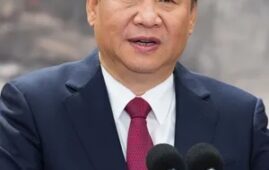By Ren Yan, People’s Daily
China became the top source of international patent application filings in 2019, according to an annual report released by the World Intellectual Property Organization (WIPO) on April 7.
Last year, a record 265,800 international patent applications were filed via WIPO’s Patent Cooperation Treaty (PCT) System, a hike of 5.2 percent from 2018. China filed 58,990 applications via the system, overtaking the U.S. (57,840 applications in 2019) as the biggest user of the PCT System.
The achievement marks notable results of China’s innovation-driven development strategy and protection of intellectual property (IP), as well as its rising capability for innovation and intellectual awareness.
“The number of patent applications in China registered a 200-fold increase in 20 years,” said WIPO Director General Francis Gurry, noting that the WIPO received only 276 applications from China in 1999.
He said China’s rapid growth to become the top filer of international patent applications is attributable to the fact that the Chinese government regards innovation as the primary driving force behind development.
For a long time, China has been the factory of the world. In recent years, the Chinese government has implemented an innovation-driven development strategy and stepped up the construction of an innovative country, making innovation an important engine supporting high-quality economic development.
According to the WIPO report, China’s telecom giant Huawei Technologies, with 4,411 published PCT applications, was the top corporate filer for the third consecutive year. Other Chinese companies that filed a large number of patents included ZTE Corp, Alibaba Group Holding Ltd. and Tencent Holdings Ltd., all of which are rapidly improving their capability for technological innovation.
Chinese patent applications in digital communication and computer technology came in first and second place worldwide, respectively.
China moved ahead of Japan in 2017 in the number of international patent applications it filed and became the second largest user of the PCT system, according to the Japan Broadcasting Corporation, adding that it took the country only two years to surpass the U.S., underscoring its progress in advanced technologies like computer science and communications.
“Intellectual property is increasingly at the heart of global competition. Nevertheless, it is important to remember that innovation is not a zero-sum game — that a net increase in global innovation means new drugs, communications technologies, solutions for global challenges that benefit everyone, wherever they live,” Gurry said.
“China’s efforts to promote technological innovation and IP protection pushed the country to the first place in the world in patent applications,” Luigi Gambardella, president of ChinaEU, a business-led international digital association in Brussels, told People’s Daily.
Information from China’s Ministry of Foreign Affairs indicates that the country ranks among the top echelon worldwide in terms of the scale and growth of expenditure on innovation. China’s expenditure on R&D increased by an average of 17 percent annually to 1.97 trillion yuan (about $280 billion) in 2018 from 300 billion yuan in 2006. The country rose to the second place from the sixth place in terms of R&D spending worldwide, and has the largest number of R&D personnel in the world.
Since the reform and opening up, China has established a relatively complete legal system for IP protection that complies with international rules and has a wide range of categories. The country has joined almost all major international intellectual property conventions and has established cooperative partnerships with more than 80 countries, international organizations and regional organizations around the world.
“The rapid development of China’s intellectual property cause is a very remarkable story,” Gurry said. China realizes the vital role of IP protection in improving economic competitiveness, and that strengthening IP protection is an important driving force behind innovation, he added.
The Chinese government has always attached great importance to the role of intellectual property in innovation and the modern economy. It has established an intellectual property system, improved basic infrastructure, consolidated legal basis, opened the curriculum system on intellectual property rights and set up intellectual property courts. These experiences are worth learning from for other countries.
China’s effective protection brings huge benefits to foreign IP holders every year. Statistics show that the country paid $34 billion for IP royalties in 2019.
Harvard Business Review, a general management magazine, wrote that “in some ways China’s IP regime is actually more optimal for IP-intensive businesses — including foreign ones — than the IP regimes in prominent rich nations.”
The waiting time to grant patents in China is shorter than those in European and American countries, and invention patent examination appears to be of higher quality in China than at some national offices in Europe, it added.









Leave a Comment